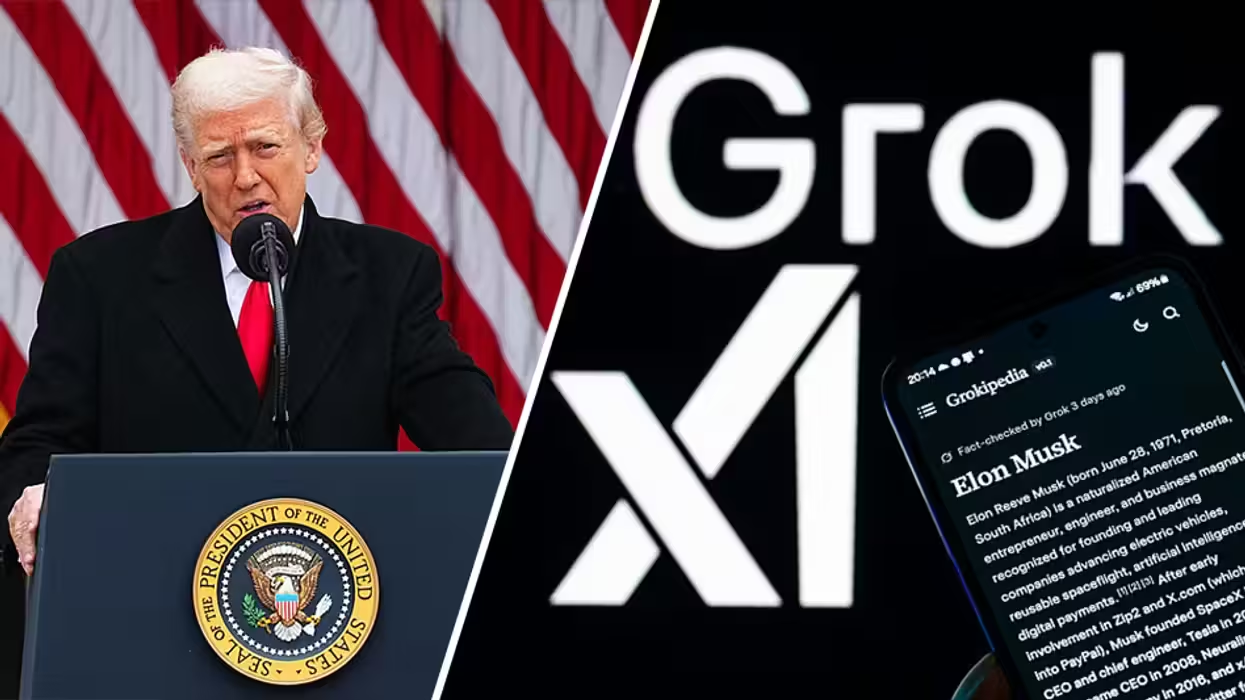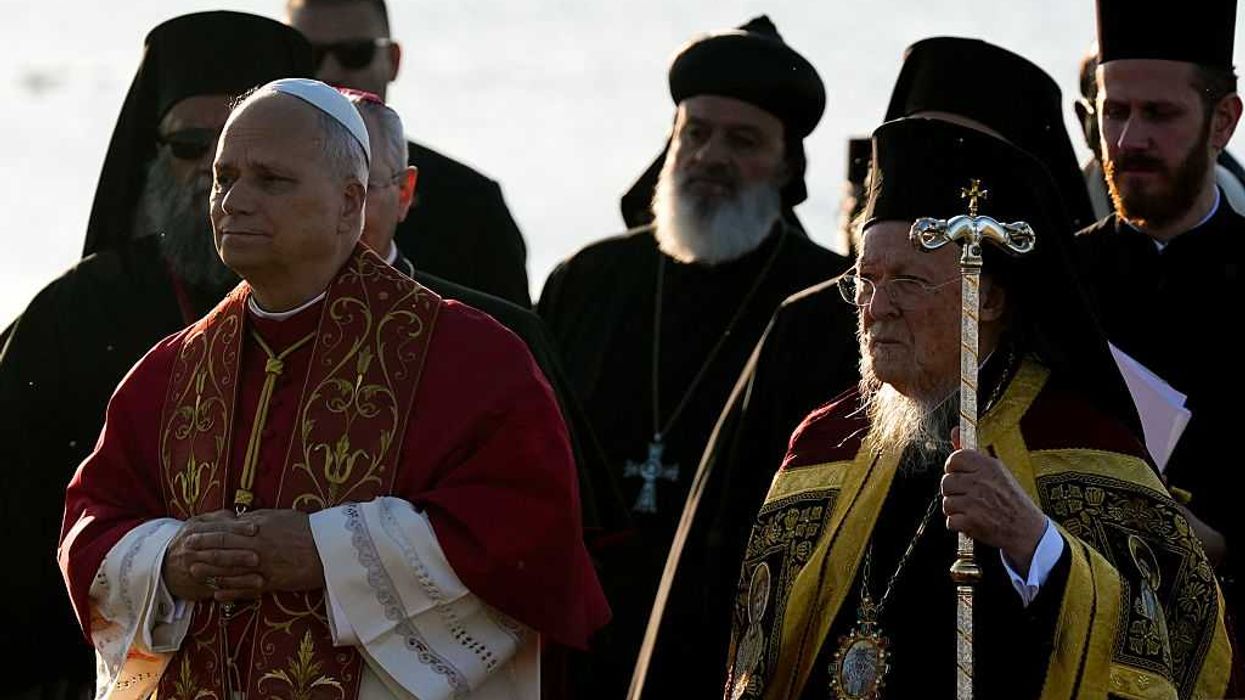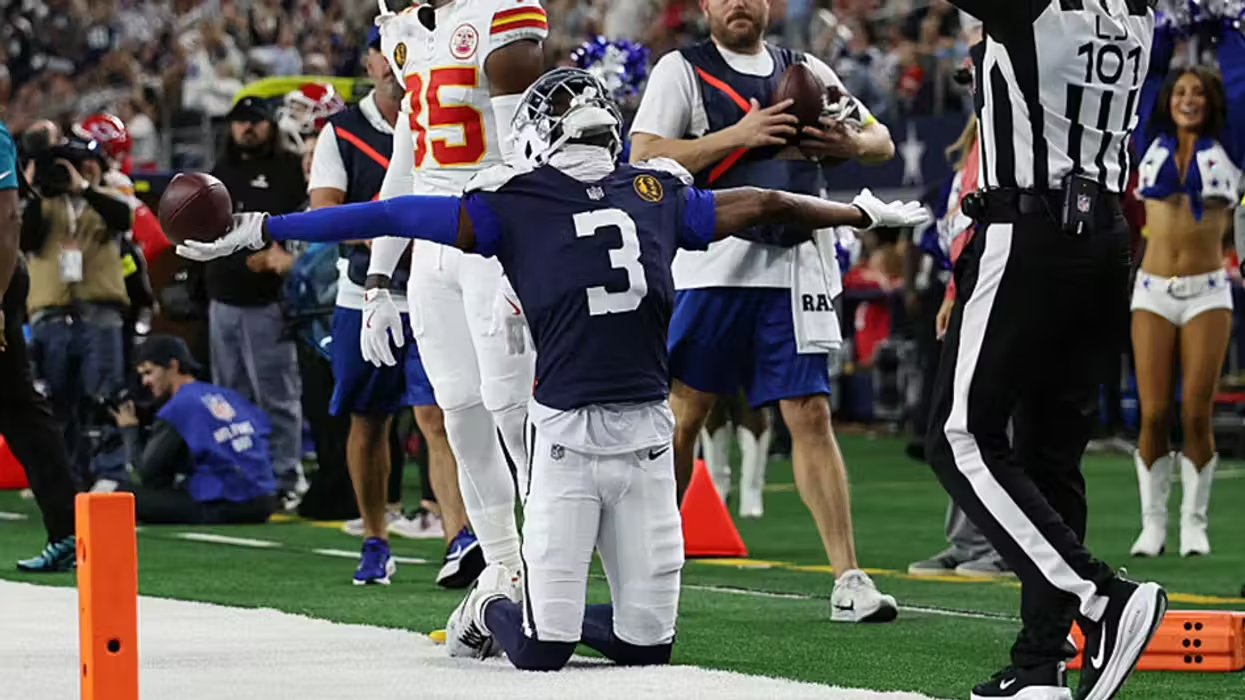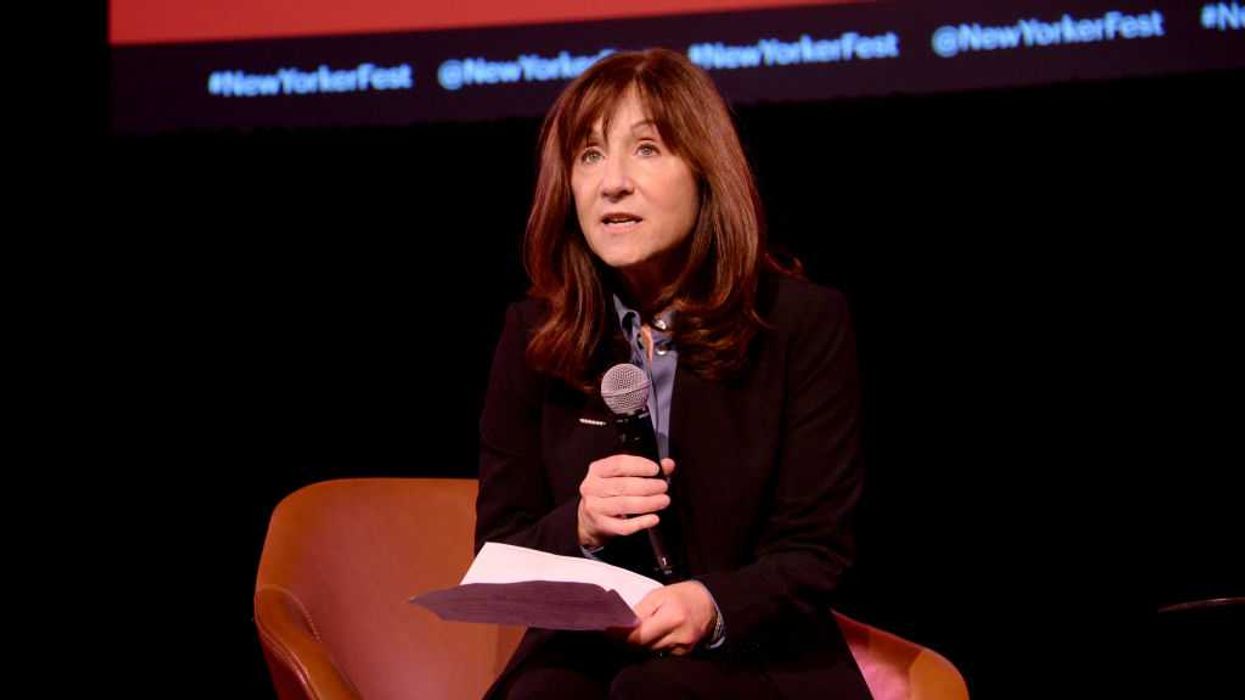Among those who charge media bias, it's likely that a new report from the Pew Research Center will create some angst. At a time when Americans -- and the Supreme Court -- are in the midst of an intense gay marriage debate, it seems media coverage of the issue has taken on a particular slant. Whether intentional or not, the findings are certainly noteworthy and, coincidentally, could have an impact on the public's perception of the issue.
 Kevin Coyne of Washington holds flags in front of the Supreme Court in Washington, Wednesday, March 27, 2013. The U.S. Supreme Court, in the second day of gay marriage cases, turned Wednesday to a constitutional challenge to the federal law that prevents legally married gay Americans from collecting federal benefits generally available to straight married couples. Credit: AP
Kevin Coyne of Washington holds flags in front of the Supreme Court in Washington, Wednesday, March 27, 2013. The U.S. Supreme Court, in the second day of gay marriage cases, turned Wednesday to a constitutional challenge to the federal law that prevents legally married gay Americans from collecting federal benefits generally available to straight married couples. Credit: AP
Journalism.org, a project by the coveted polling group, explains analysis of news articles and coverage that was produced and aired between March 18 and May 12:
In a period marked by Supreme Court deliberations on the subject, the news media coverage provided a strong sense of momentum towards legalizing same-sex marriage, according to a new study by the Pew Research Center. Stories with more statements supporting same-sex marriage outweighed those with more statements opposing it by a margin of roughly 5-to-1.
In the coverage studied, the central argument among proponents of same-sex marriage was one of civil rights. Arguments against were more varied, but most often voiced the idea that same-sex marriage would hurt society and the institution of traditional marriage.
Almost half (47%) of the nearly 500 stories studied from March 18 (a week prior to the Supreme Court hearings), through May 12, primarily focused on support for the measure, while 9% largely focused on opposition and 44% had a roughly equal mix of both viewpoints or were neutral. In order for a story to be classified as supporting or opposing same sex marriage, statements expressing that position had to outnumber the opposite view by at least 2-to-1. Stories that did not meet that threshold were defined as neutral or mixed.
Of course, the situation is more complicated than simply charging the mainstream media with overt bias. During a time in which state legislatures are passing pro-gay marriage laws and celebrities and influentials are coming out in support of same-sex matrimony, the media -- in merely covering these issues -- could end up appearing biased.
 Photo Credit: Pew Research Center
Photo Credit: Pew Research Center
That said, there's always the argument that journalists should strive for balance, even when covering legislative developments. Capturing quotes from individuals on both sides of the issue would have made for greater equality in coverage. As for the way in which Pew measured quotes and statements, it appears this balance didn't happen.
Interestingly, public support, as Journalism.org notes, is still divided on the gay marriage issue. While the majority -- 51 percent -- want to see gay marriage legalized, 42 percent of the nation is still opposed. The media coverage, though, didn't reflect this breakdown, as outlets' focus has been on more pro-gay marriage sentiment (at least during the aforementioned time frame).
Journalism.org continues: "All three of the major cable networks, for instance, had more stories with significantly more supportive statements than opposing, including Fox News."
Interestingly, on Twitter, where individuals' voices are more likely to be heard en masse, there was a split of conversation on the subject that was more closely aligned with public opinion. Considering that social media is the peoples' medium for communication, this makes sense.
Here are some of the other findings (courtesy of Pew):
- Despite the preponderance of supportive coverage across media sectors, the level of mixed or neutral coverage varied among individual outlets. In cable news, for example, MSNBC produced 30% mixed, 64% supporting and 6% opposing, among the stories studied. The coverage on Fox News was 63% mixed, 29% supportive of the measure and 8% opposing. And on CNN, the break was 57% mixed, 39% supporting and 4% in opposition. In newspapers, the Wall Street Journal and USA Today stood out for higher levels of mixed or neutral reporting, 70% and 67%, respectively, and more even ratio of supporting versus opposing stories.
While expressing strong support for the measure, LGBT news outlets focused on a different element of the story than any of the other media studied. A full quarter, 25%, of the coverage in the 11 LGBT outlets studied focused on local and state laws, an element that made up just 10% of the other news coverage. Generally, those stories detailed developments in marriage legislation on the state level.
- On social media, the opinions expressed on Twitter were closely split between those that supported (31%) and those that opposed (28%). There were, however, significant shifts in the sentiment over the nine weeks studied. During the week prior to and the week of the Court hearings, more of the Twitter conversation favored same-sex marriage. The two following weeks saw a reverse with more posts in opposition. Then, during the last month of the study, assertions in favor of the measure once again took the lead.
Overall, 1,080 stories and 2.4 million tweets were analyzed by Pew from March 18 through May 12. For more information about the study and for complete results, read the article recapping the findings on Journalism.org.
--
Other Must-Read Stories:

 Kevin Coyne of Washington holds flags in front of the Supreme Court in Washington, Wednesday, March 27, 2013. The U.S. Supreme Court, in the second day of gay marriage cases, turned Wednesday to a constitutional challenge to the federal law that prevents legally married gay Americans from collecting federal benefits generally available to straight married couples. Credit: AP
Kevin Coyne of Washington holds flags in front of the Supreme Court in Washington, Wednesday, March 27, 2013. The U.S. Supreme Court, in the second day of gay marriage cases, turned Wednesday to a constitutional challenge to the federal law that prevents legally married gay Americans from collecting federal benefits generally available to straight married couples. Credit: AP





